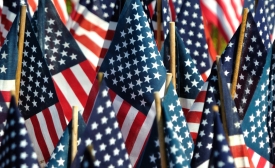american center
Concerns about the closing of the American Center in Moscow appear to be overblown. Russia is still open to new ideas and the constructive role that can be played by soft power. [...] This may look like a form of paranoia, but truly speaking, the major goal is to find a fine line between culture and politics.
The closure of the American Center in Moscow is just the latest step taken by the Kremlin to crack down on U.S. public diplomacy initiatives within Russia and ratchet up anti-Western sentiment.[...] As Ambassador Tefft suggests, the move marks the culmination of a decades-long process of undermining U.S. cultural influence in Russia that emerged in the wake of the post-perestroika euphoria and belief in the rosy future of Russian-U.S. relations.

A new white paper has been released by the United States Advisory Commission on Public Diplomacy. The piece, Public Diplomacy at Risk: Protecting Open Access for American Centers appeared online on May 5, 2015.
While the Fulbright educational program celebrated its 40th anniversary in Russia on April 10, U.S. Undersecretary of State for Public Diplomacy and Public Affairs, Tara Sonenshine, took the opportunity to drop in on the American Center in Moscow. She delivered a speech on the importance of soft power and how it can be used to cope with and minimize political differences.
How many cultural and educational centers does Russia have in the United States? This was the very question that preoccupied my thoughts when I first visited the American Center in Moscow in the Foreign Literature Library in 2008. Although I didn’t find the exact answer to my question, I came up with my own ideas regarding successful soft power and the example set by the U.S. government.
In a much anticipated performance, The Spectrum Dance Theatre will be performing in Sri Lanka this week. ‘An Evening of Excerpts from Repertory by Donald Byrd’ is presented by the American Centre in Colombo together with Dance Motion USA and will include a selection of five among the company’s most impressive dance creations. “The pieces provide a broad overview of one aspect of the Donald Byrd/ Spectrum Dance theatre aesthetic, its physicality,” the group’s Artistic Director, Donald Byrd, told the Sunday Times in an email ahead of the performance.
I am glad to speak to you today about American Spaces, knowing that they are already getting traction and attention here. Harvard University recently collaborated with the American Security Project to create a fact sheet on the facts and figures, and the impact, of American Spaces – and that is released and distributed this week.







